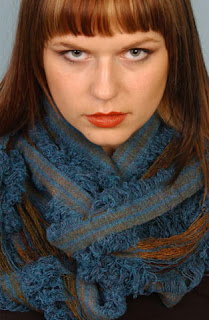I don't know about you..... but this was a 'wow' moment for me, when I clicked on a
WeaveTech link through to this story on the
Architects Newspaper blog.
This is a temporary installation on Richard Neutra’s VDL House in Silver Lake, LA, by Mexico City-based artist Santiago Borja. A functioning loom has been created using the buildings integral steel beams, upon which a woolen artwork was then woven using Mayan inspired symbols.
Full details of the project can be found on
Galley 727 website, from which I quote the following text:
FORT DA // SAMPLER is a site-specific installation by Mexico City-based artist Santiago Borja. The artist and his collaborators have erected a temporary, functioning textile loom transforming the roof of architect Richard Neutra’s family home. Borja’s architectural intervention encourages new readings of this place, and what he sees as the elusive nature of “magical thinking” embedded in Modernism. The project grows from the formal similarities between modern abstract geometry and Mayan patterning used to represent the cosmos.
The installation title comes from Borja’s study of Freud’s “Fort / Da” theory, which says that the symbolic allows us to manage the discrepancies between pleasure and reality. Freud developed his theory while watching a child repeatedly throw a wooden reel attached to a string over a ledge. The child would watch it disappear, retrieve it, and then throw it back again. Freud theorized that this game was how the child managed his anxiety created by the absence of his mother. Borja takes this theory further, envisioning the act of throwing the reel as a way to trace an emotional space that visually and physically connects us to a distant place.
In Chiapas, as in other areas of Mexico, young apprentices establish their identity as textile makers through the creation of several samplers that codify the entire textile language. The process of weaving and embroidering these samplers connect them to past, present, and future textile processes, creating a dialogue with the cosmic and natural world around them.

















